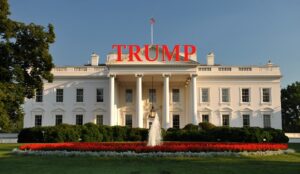Understanding the Economic Implications of Government Size: Lessons from Argentina and the U.S.

When President Donald Trump announced a federal freeze on loans and grants, he did so with a vision of curbing the expansive reach of government funding. This freeze, however, was met with judicial resistance and sparked a critical dialogue about the growth of the public sector and its underlying effects on the economy in the United States and beyond.
The Infinity of Unseen Agencies
In recent years, the number of federal agencies has skyrocketed, leading many to question the genuine purpose behind their existence. As Adam Smith noted in his seminal work, "Wealth of Nations," governments often act as poor stewards of financial resources, borrowing from their own coffers and perpetuating cycles of debt rather than investing wisely in productive avenues.
“Like an improvident spendthrift, whose pressing occasions will not allow him to wait for the regular payment of his revenue, the state is in the constant practice of borrowing of its own factors and agents, and of paying interest for the use of its own money.”
At Extreme Investor Network, we believe understanding these underlying dynamics is critical. The truth is, the health of a nation’s economy does not solely rest on monetary wealth; it’s a measure of production, innovation, and the ability of its populace to thrive. Encouragingly, there’s evidence that the excesses of government can severely stifle production.
Case Study: Argentina’s Rapid Recovery
Take Argentina as a case in point. Recent reforms under President Javier Milei are a testament to the transformative power of reducing governmental bloat. When he took office, the national administration was heavily staffed, with nearly 342,000 public employees. By targeting unnecessary positions and agencies, such as the Ministry of Culture and the Ministry of Social Development, Milei aims to reduce the public workforce by 70,000. Remarkably, this reduction is projected to save taxpayers $3.82 billion almost immediately.
Argentina’s experience demonstrates that eliminating superfluous government agencies can yield rapid fiscal recovery. This raises a pivotal question: Could similar measures in the U.S. create a more vibrant economy?
The U.S. Context: Misleading GDP Metrics
In the U.S., debates surrounding funding inequalities and social programs often distract from the larger picture. While it’s imperative to support vulnerable populations, the current governmental structures perpetuate an economic environment where public sector employment can distort GDP statistics.
Government spending is often included in GDP figures without deducting the associated costs, leading to inflated perceptions of economic health. The paradox is evident: as we grow the public sector, we often see a counterproductive effect on genuine economic growth. The stats might look favorable, but the underlying reality tells a different story.
Under previous administrations, compensation models aimed at adding jobs often resulted in a larger public sector that has failed to contribute meaningfully to economic output. Recognizing this is crucial in restructuring employment strategies that prioritize sustainable growth.
Rethinking Federal Support Programs
Trump’s administration focused on identifying over 2,600 federal programs for evaluation to determine their economic viability, a strategy echoed by current leadership. This scrutiny aims to disentangle legitimate programs from those merely serving ideological agendas, including initiatives linked to Diversity, Equity, and Inclusion (DEI), which some argue have detoured from the original goal of equitable support.
As many programs come under the microscope, it’s essential to ask: Are they building a foundation for enduring prosperity, or are they creating dependence?
The Extreme Investor Network advocates for vigilant reviews of government spending to ensure taxpayer funds are directed toward programs that genuinely benefit the populace, rather than simply altering the landscape of government employment.
Lessons for Future Governance
History serves as an instructive guide. The collapse of the Roman Empire exemplifies the dangers of escalating public debt and an oversized bureaucratic structure. Excessive government, unaligned with economic performance, ultimately leads to deterioration—a lesson that modern economies should heed.
To stimulate growth, a shift towards a more productive and efficient governance model is paramount. Cutting redundant programs, refining the bureaucracy, and promoting private sector initiatives could pave the way for a thriving economy.
In conclusion, the need for government reform is more pressing than ever. By learning from experiences in Argentina and aligning strategies that prioritize functional efficiency over ideological missions, we can build a more resilient economic future. At Extreme Investor Network, we are committed to analyzing these vital issues to provide our readers with insights that empower sound investment decisions and ultimately contribute to a prosperous society.

